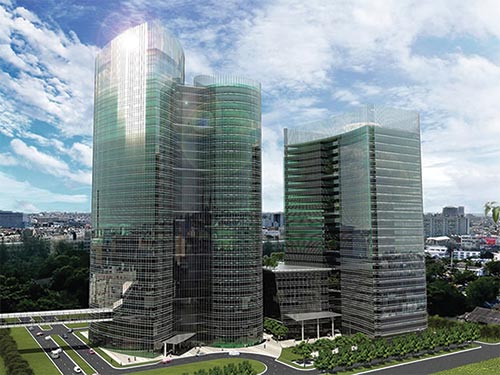Going green is not that pricey

Energy Complex, a LEED Platinum office in Bangkok, Thailand
Design and construction professionals seem to be happy to spread the rumour that green buildings can cost up to 25-40 per cent more than normal construction techniques, but this is far from the case and is having a negative impact on the growth of green building development in Vietnam.
Original grade
Extra costs associated with green buildings depend heavily on the original grades or original budgets of clients. The higher the original costs, the lower the extra costs are. The rationale behind that is that it might cost you extra to procure high-efficiency equipment and eco-friendly materials. If this is the case then your original budget was already large enough to go green anyway.
Take the example of Energy Complex in Bangkok, the first LEED Platinum project outside the US. When asked how high the extra cost was, Weena, vice president of Engineering and Property Management Department said, “It’s like buying a car. If you think Mercedes, then it doesn’t cost you much extra to have a luxury car produced by other brands. But if you think Toyota, then you of course pay much more to have a luxury car. In the case of Energy Complex, it is just 3-4 per cent extra. I would also say having paid a recent visit, that I was really very impressed.”
Another example is a five star hotel. Routinely, a five star hotel would be built based on the criteria set for Intercontinental, Shangri-La and Sofitel chain standards. These hotel brands always have comprehensive guidelines about energy and water savings, material quality and so on. And those guidelines are often correlated with green building requirements more or less. That’s why making a five star hotel green does not cost you much extra.
Pursued levels
The US Green Building Council has four levels of LEED certification - Silver, Gold and Platinum. Recent statistics from Malaysia have revealed it costs just 0.3 per cent extra to construct a basic green building. Even President Place, the first LEED Gold office building in Ho Chi Minh City and Vietnam only cost an additional 5 per cent.
The consultants
The extra costs also depend heavily on consultants, especially green building specialists. Capable and experienced consultants would certainly reduce the extra costs critically as they know how to balance spending on various items. There are certain types of materials that do not cost extra for better performance. Clean Colorbond Thermatech roofing material is one example. BlueScope does not charge a premium for a higher SRI, or Solar Reflectance Index, roofing sheets. But higher SRI roofing material helps save energy and reduce the urban heat island effect. So by simply selecting the right material, it helps the project comply with green building requirements without paying any extra on that.
In conclusion, going green does not cost you a fortune or cost you much extra to go. Any type of project of any level can go green actually. A traditional house in Malaysia with natural ventilation and local materials could achieve a LEED Platinum rating quite easily.
What the stars mean:
★ Poor ★ ★ Promising ★★★ Good ★★★★ Very good ★★★★★ Exceptional
Latest News
More News
- The Kross ascends in Ho Chi Minh City's business heart (October 10, 2025 | 17:16)
- ESG-driven sustainability to define Vietnam’s green real estate (September 19, 2025 | 11:35)
- Tan Thuan Tower open for high value-added and innovative tenants (September 10, 2025 | 10:00)
- The new home of modern business at Hanoi's Starlake (August 19, 2025 | 08:00)
- Forum focuses on financial solutions for ESG in real estate (June 18, 2025 | 12:12)
- Frasers Property Vietnam moves towards green real estate leadership (May 08, 2025 | 11:25)
- Keppel collaborates with leading brands to enhance urban living in Vietnam (April 04, 2025 | 09:26)
- Strengthen partnership and efforts to promote zero energy buildings in Vietnam (February 26, 2025 | 17:31)
- Haus Dalat ESG real estate project holds opening ceremony (February 24, 2025 | 11:12)
- Best golfers awarded at Swing for the Kids 2024 (October 13, 2024 | 08:00)

















 Mobile Version
Mobile Version